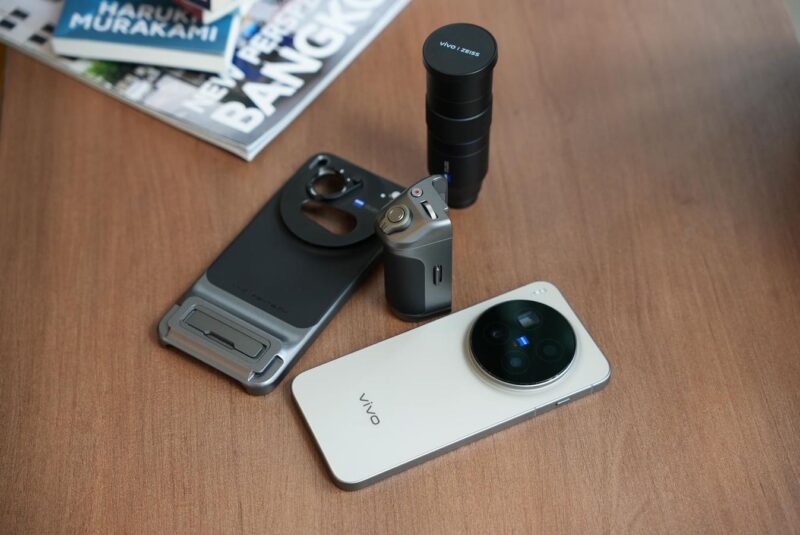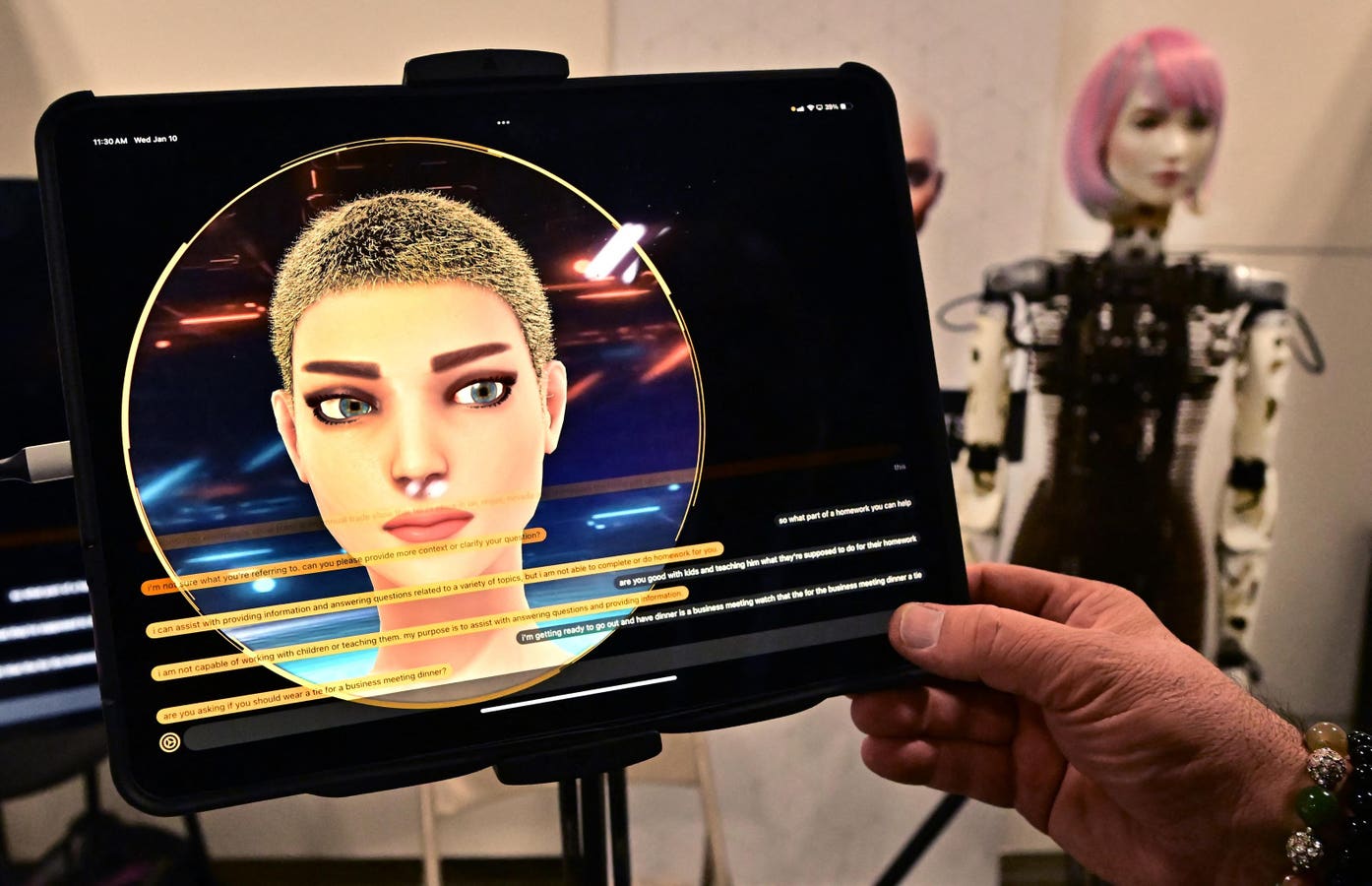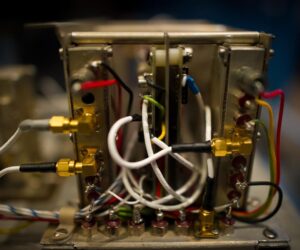The Vivo X300 Pro with Photographer Kit
Ben Sin
Smartphone manufacturer Vivo has developed a reputation in recent years for having the best mobile cameras around, and the company’s flagship mobile strategy is essentially as follows: every Q2 the company launches an “Ultra” phone, which is the most spec’ed out, experimental camera phone, using the new and usually never-before-seen camera components. This Ultra phone will be sold in China only, and is usually relatively bulky due to all the bleeding edge hardware. Then six months later, Vivo will take most of those new tech and offer them in a more streamlined, mainstream package for the global audiences.
That’s the case with the just-released X300 Pro. It adopts some of the strengths established by the tremendous (still my favorite phone of the year) X200 Ultra, such as a “Photographer Kit” that supports a six-inch long Zeiss lens add-on, and improved LOG video recording. It even one-ups the Ultra in some ways, by using a newer iterations of Sony and Samsung imaging sensors for its main and telephoto lenses.
The Photographer Kit includes a case, a camera grip, and a six-inch long Zeiss-built lens that magnifies the phone’s already excellent zoom capabilities. This is a separate purchase, however.
Ben Sin
The result is a phone that should win every camera battle against other globally-launched smartphones, though it still clearly sits behind the X200 Ultra in the ultimate smartphone camera pecking order.
But since the Photographer Kit is a separate purchase, let’s first focus on just the phone itself. The X300 Pro continues the design language used by Vivo phones in the past few years, with a circular camera module housing a triple-lens system. The X300 Pro’s camera bump is not as bulky as the Ultra’s.
This is impressive considering two of the X300 Pro’s cameras (the main and the zoom lens) are at least as good as the Ultra’s. With the only noticeable downgrade coming in the ultra-wide camera, as the Ultra’s ultra-wide uses a much larger sensor than the Pro’s. The slimming down took a bit of engineering feat, but also because the Pro’s main camera shoots at a default 23mm focal length compared to the Ultra’s 35mm. That extra tighter focal length adds to the space needed for the camera module.
The X300 Pro and the X200 Ultra. The latter’s camera bump is larger and thicker.
Ben Sin
The Pro’s main camera is a 50-megapixel shooter using Sony’s LYT-828 sensor. It packs a 1/1.3-inch sensor, which is relatively larger, but pales in comparison to the 1-inch sensors Chinese brands used from 2023-2024 but have mysteriously all ditched. For what it’s worth, Vivo camera engineers insist the 1/1.3-inch sensor produces the same level of quality as the 1-inch sensor, and my testing also didn’t seem much difference.
The telephoto camera uses the brand new Samsung ISOCELL HPB sensor. This new sensor was apparently designed and customized for Vivo specifically, and no other phone will be able to use it for, I’m guessing, six months or so. This is a 200-megapixel sensor that’s a slight update on the already epic HP9 sensors used in the last three Vivo flagships. The sensor size here — 1/1.4-inch — is absolutely gigantic for a zoom lens. We are talking about more than double the size of what Apple or Google use in their zoom lenses.
The ultra-wide, as mentioned, is a not as powerful as the X200 Ultra’s, but still quite capable.
Vivo X300 Pro cameras
Ben Sin
The display is a 6.8-inch OLED panel with razor-thin bezels. The front and back side are now completely flat, wrapped by an aluminum frame. Powering everything is the MediaTek Dimensity 9500, the newest and best silicon from the firm that’s designed to go head-to-head against Qualcomm’s best.
The X300 Pro screen
Ben Sin
The display panel looks brilliant as expected, and overall craftsmanship for the phone is top notch. But if there’s one area that may disappoint, it’s the battery capacity, or at least the specific EU model I’m testing.
The X300 Pro that sells in China and apparently rest of Asia will ship with a 6500 mAh battery, but the EU version I am reviewing has a 5440 mAh cell. The smaller size is due to EU regulations, which limits the size of silicon-carbon batteries that can be imported.
The 5440 mAh battery, simply put, isn’t enough to last me a full active day. To be fair, I am a heavy user and an active person: a full active day for me usually means something like “step out of the house at 9am, and not get back indoors until 10 or 11pm.” So we are talking about 13-14 hours of continuously being outside, traversing all around a city, snapping dozens of photos and videos. For this type of usage, the X300 Pro can only last me about 10 hours, meaning I need to pull out a portable battery pack or a charger before I finish my day.
This isn’t that big a deal to be honest, but it’s jarring because I am also testing a direct rival phone from Oppo right now that packs a 7500 mah battery, and this Oppo phone can easily finish a 14 hour day outside with over 20% to spare. Oppo also managed to find a clever solution around EU restrictions by separating its battery into two 3750 mAh cells. In all my years of testing smartphones, I have never tested two direct competitors, releasing in the same window, with such drastic battery size difference (7500 mAh vs 5440 mAh).
I need to stress again that the X300 Pro’s battery life is not bad by any normal measure. It will last a full day for the average Joe who isn’t outside continuously for 14 hours. And the smaller 5440 cell is only for the EU market, so if you’re buying the Singapore or Thailand version, the phone will have a larger battery that in theory could survive my 14 hour days.
But still, I can only evaluate what I have for review, and the 5440 mAh cell is not enough for me.
Let’s move back to the Photographer Kit. The kit itself is virtually the same kit that launched for the X200 Ultra, except the case is shaped to fit the new phone. I wrote a detailed hands-on of the kit earlier this year, so check that out if you want more detailed breakdown.
The X300 Pro with the Photographer kit
ben Sin
But essentially, the kit turns the X300 Pro into the thing above — something resembling a real camera. The long lens adds 2.33x magnification to the phone’s 85mm focal length to offer 200mm optical length, which in “casual smartphone terms” is about an 8.5X zoom.
The X300 Pro producing a native 200mm zoom with the Photographer Kit.
Ben Sin
A 200mm shot is not only a longer zoom, but it also produces natural bokeh and background compression, resulting in a shot that looks more “pro” than a normal smartphone photo. Below are some shot snapped by the X300 Pro with the lens.
The image on left is the scene my eyes see. The images in the middle and right are what the X300 Pro with lens can capture. Notice the details, and the natural bokeh and background compression.
Ben Sin
The image on left is the scene my eyes sees. The image on the right is what the X300 Pro with lens can capture. Notice the details, and the natural bokeh and background compression.
ben Sin
Even without the Photographer Kit, the X300 Pro by itself can capture some beautiful telephoto images at around the 85mm or 135mm focal lengths. The shots below were snapped with just the phone, without additional accessories.
85mm shots with the Vivo X300 Pro
ben Sin
So other than the battery life, I have no complaints at all with the Vivo X300 Pro, and it should be the best camera phone this year among global releases. The X200 Ultra is still a bit better, and will hold on to the title of best camera phone, period.








